Ancient Russia and France in the XI century. The fate of the Russian princess Anna Yaroslavna
WOMAN AND CONSOLIDATION OF POWER
In the tenth century in Russia, the unification of many Slavic tribes (there were more than thirty) into a single ancient Russian state. At the same time it is interesting to trace the socio-economic and other reasons, which then caused changes in the history of France and Russia. They are almost the same. From early feudal fragmentation, both countries are moving to a centralized government. This circumstance is especially important, since it is generally recognized that before the Mongol invasion, Ancient Russia developed according to the laws common to Europe.
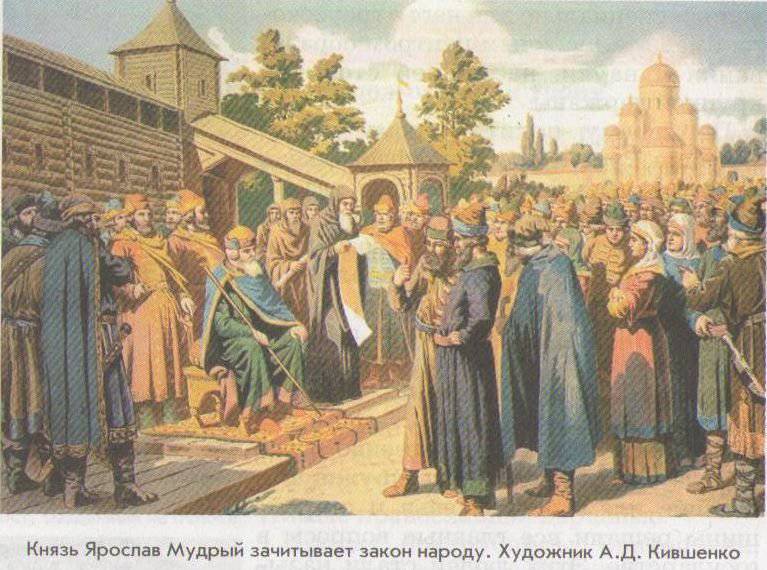
It was a time when power assumed fundamental importance. Initially, she had a kind of "home", court character. Historical documents of that period traditionally highlight the power of men at different levels and, of course, as head of state. About the presence of women next to him speak only their names and dates of life. The role they play can be judged only indirectly, by the specific events that took place in the country and in the palaces of the sovereigns. Nevertheless, the special role of a woman was already obvious. Even the church (as an institution), determining the place of spiritual power in the state, used the image of a woman-mother and declared that the church is the mother who gives spiritual life to people through her faithful bishop sons.
Power and its forms in the state were established primarily on the basis of property, economic relations, but also under the influence of inequality. The experience of inequality has traditionally been acquired in the family, in family relationships. Therefore, the inequality of man and woman was perceived as sent down from above, created by God - as a reasonable distribution of duties. (Only from the 18th century, under the influence of revolutionary ideas and ideas of the Enlightenment, the concept of inequality begins to be viewed from negative positions.)
The relationship of the spouses (especially in the power, public spheres) meant that for women entering into marriage, only one duty is defined - to protect the interests of the husband and help him. The exception was widows who, after losing their spouse, served as head of the family, and sometimes the state. Thus, from the "female" duties, they shifted to the execution of the duties of "male". Such a mission was successfully carried out only by a woman with a talent, character, will, for example, Grand Duchess Olga, Novgorod mayor of Martha, widowed queen Elena Glinskaya ... However, here we are not talking about "equality of women", because notion of a different order.
With the emergence of large feudal empires, strict continuity of power was required. It was then that the question of control over the institution of marriage arose. Whose word will be decisive? King, priests? It turned out that the main word was often left to the woman, the continuer of the clan. Increasing the family, taking care of the growing offspring, about its physical and spiritual development and about the position it will take in life, as a rule, fell on the shoulders of women.
That is why the choice of the bride, the future mother of the heirs, meant so much. From this choice depended on the place and the influence that the mother could acquire in the family, and not only thanks to the mind and talent. A significant role was played by its origin. If we talk about the families of sovereigns, then the degree of the wife’s attitude to the royal family of his or that country was important. This is what largely determined the international and economic relations between European states. Carrying a royal child, the woman reunited two parental blood, two pedigrees, predetermining not only the nature of future power, but often the future of the country. The woman - the spouse and mother - already in the early Middle Ages was the basis of the world order.
YAROSLAV THE WISE AND THE ROLE OF A WOMAN AT THE PRINCE YARD
In Russia, as well as in Europe, marriage unions were an important part of foreign policy. The family of Yaroslav I, called the Wise (years of the great reign: 1015-1054), intermarried with many royal houses of Europe. His sisters and daughters, having married European kings, helped Russia to establish friendly relations with the countries of Europe, to solve international problems. And the formation of the mentality of future rulers was largely determined by the outlook of the mother, her family ties with the royal courts of other states.
The future grand dukes and future queens of European states, who came from the family of Yaroslav the Wise, were brought up under the supervision of their mother - Ingigerdy (1019-1050). Her father - the king of Sweden Olav (or Olaf Shetkonung) - gave the city Aldeyburgburg and all of Karelia to the daughter’s dowry. The Scandinavian sagas convey the details of Yaroslav’s marriage to Princess Ingigerd and the marriage of their daughters. (A retelling of some of these Scandinavian sagas was made by S. Kaidash-Lakshin.) The legends and myths included in the Circle of the Earth confirm the historical events mentioned. Undoubtedly, the kindred and friendly relations of the Grand Duchess Ingigerda had an impact on the marriage unions of their daughters. All three daughters of Yaroslav became the queens of European countries: Elizabeth, Anastasia and Anna.
The Russian beauty Princess Elizabeth won the heart of Norwegian Prince Harold, who served her father in her youth. To be worthy of Elizabeth Yaroslavna, Harold went to distant countries to gain fame by exploits, as AK Tolstoy poetically told us:
Harold sits in the battle saddle
He left Kiev sovereign,
He sighs his way hard:
"You are my star, Yaroslavna!"
Harold the Bold, having made trips to Constantinople, Sicily and in Africa, returned to Kiev with rich gifts. Elizabeth became the wife of the hero and the queen of Norway (in the second marriage - the queen of Denmark), and Anastasia Yaroslavna - the queen of Hungary. About these marriages were already known in France, when Princess Henry I won over King Henry I (he reigned from 1031 to 1060 a year).
Yaroslav the Wise taught children to live in peace, love among themselves. And numerous marriage unions strengthened ties between Russia and Europe. The granddaughter of Yaroslav the Wise, Eupraxia, was given for the German Emperor Henry IV. Sister Yaroslava, Maria Vladimirovna (Dobronega), - for the king of Poland Casimir. Yaroslav gave his sister a great dowry, and Casimir returned 800 Russian prisoners. The marriage with the brother of Anna Yaroslavna, Izyaslav Yaroslavich, and the sister of Casimir, the Polish princess Gertrude, also secured relations with Poland. (Izyaslav inherited the great Kiev throne after his father in 1054.) Another son of Yaroslav the Wise, Vsevolod, married an overseas princess, daughter of Konstantin Monomakh. Their son Vladimir II immortalized the name of his maternal grandfather, adding to his name the name Monomakh (Vladimir II Monomakh reigned from 1113 to 1125 a year).
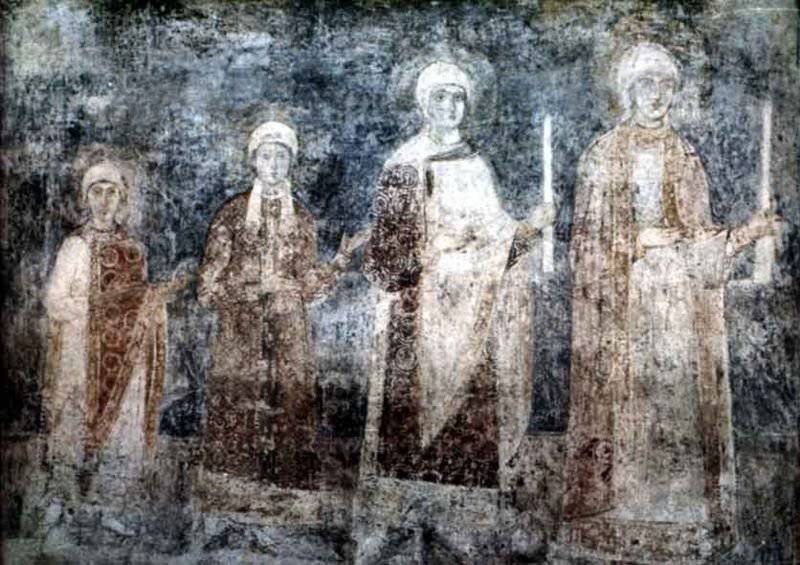
The way of Yaroslav to the grand throne was far from easy. Initially, his father, Vladimir the Red Sun (980-1015), planted Yaroslav to reign in Rostov Veliky, then in Novgorod, where a year later Yaroslav decided to become an independent sovereign of the vast Novgorod land and free himself from the power of the Grand Duke. In 1011, he refused to send hryvnias to Kiev on 2000, as all Novgorod posadniki did before him.
When Yaroslav reigned in Novgorod "under the hand of" Vladimir, coins with the inscription "Yaroslavl Silver" appeared. On one side of it is depicted Christ, on the other - St. George, the patron saint of Yaroslav. This first Russian coinage continued until the death of Yaroslav the Wise. At that time, Ancient Russia was at the same level of development with neighboring European countries and played a significant role in shaping the image of medieval Europe, its political structure, economic development, culture and international relations.
After the death of Vladimir the Red Sun between his sons, a stubborn struggle unfolded for the grand princely throne. In the end, Yaroslav won, he was then 37 years old. And it was necessary to be truly Wise, to repeatedly overcome numerous confrontations of princes in the name of the unification of Russia: Yaroslav won the throne of the Grand Duke several times and lost it in his life.
In 1018, he made an alliance with Henry II of Germany, which was a high level of international relations of Russia. Not only Henry II considered it an honor to negotiate with Russia, but Robert II the Pious, the King of France, the father of the future husband of Anna Yaroslavna. The two sovereigns agreed in 1023 on the reform of the church and the establishment of the peace of God among Christians.
The reign of Yaroslav the Wise is the time of economic prosperity of Russia. This gave him the opportunity to decorate the capital following the example of Constantinople: the Golden Gate, St. Sophia Cathedral appeared in Kiev, in Kiev, the Kiev-Pechersk monastery, the highest school of the Russian clergy, was founded in 1051. In Novgorod, in 1045-1052, a Hagia Sophia was erected. Yaroslav the Wise, a representative of a new generation of literate, enlightened Christians, created a large library of Russian and Greek books. He loved and knew the church statutes. In 1051, Yaroslav made the Russian Orthodox Church independent of Byzantium: independently, without the knowledge of Konstantino Polya, he appointed the Russian Metropolitan Hilarion. Earlier, the Greek metropolitans were appointed only by the Byzantine patriarch.
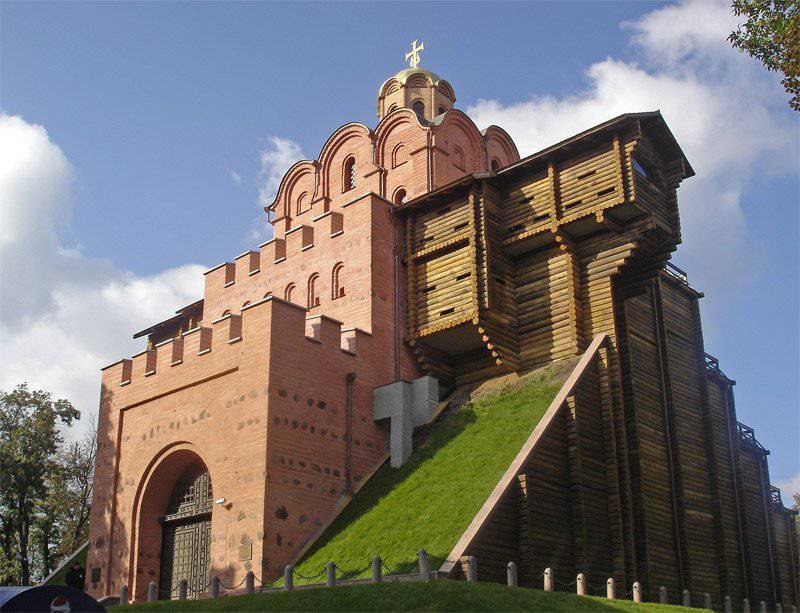
ANNA YAROSLAVNA - QUEEN OF FRANCE
Matchmaking and the wedding of Anna Yaroslavna took place in 1050, then she was 18 years old. Ambassadors of the King of France, recently widowed Henry I, went to Kiev in the spring, in April. The embassy moved slowly. In addition to ambassadors who rode on horseback, who traveled on mules, who rode horses, the wagon train was made up of numerous carts with supplies for the long journey and carts with rich gifts. As a gift to prince Yaroslav the Wise, magnificent fighting swords, overseas cloth, precious silver bowls were intended ...
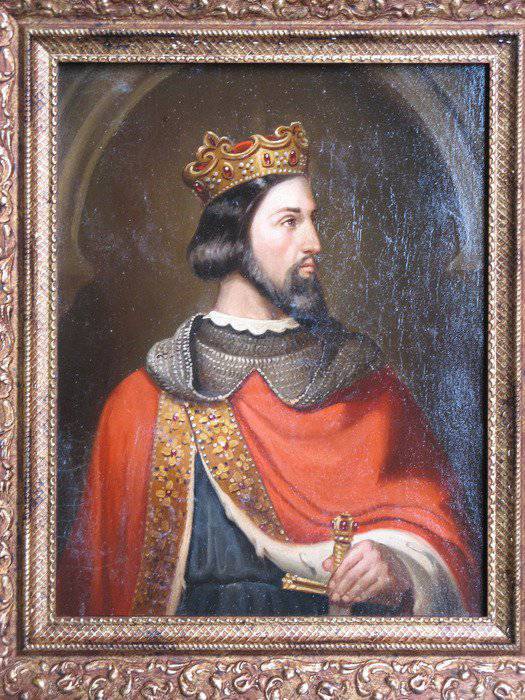
On the boats we descended the Danube, then on horses we passed through Prague and Krakow. The path is not the closest, but the most beaten and safe. This road was considered the most convenient and crowded. Trading caravans went east and west along it. The embassy was headed by the Chalonsky bishop Roger from a noble family of graphs of Namur. The eternal problem of the younger sons - red or black - he decided by choosing a sutan. An extraordinary mind, noble origin, masterful grip helped him successfully to conduct earthly affairs. His diplomatic skills were used more than once by the King of France, sending the bishop to Rome, then to Normandy, then to the German emperor. And now the bishop was approaching the goal of his great historical mission, which went down in history for thousands of years.
Besides him, the embassy was the bishop of the city of Mo, the learned theologian Gautier Sawyer, who would soon become the teacher and spiritual father of Queen Anne. The French Embassy arrived in Kiev for the bride, Russian Princess Anna Yaroslavna. Before the Golden Gate of the capital of Ancient Russia, it stopped with a sense of surprise and delight. Anna's brother, Vsevolod Yaroslavich, met ambassadors and easily explained himself with them in Latin.
The arrival of Anna Yaroslavna on the land of France was furnished solemnly. Henry I went to meet the bride in the ancient city of Reims. The king, in his forties, was fat and always gloomy. But, seeing Anna, he smiled. To the credit of a highly educated Russian princess, I must say that she was fluent in Greek, and she learned French quickly. On the marriage contract, Anna wrote her name, her husband, the king, instead of signing, put a "cross."
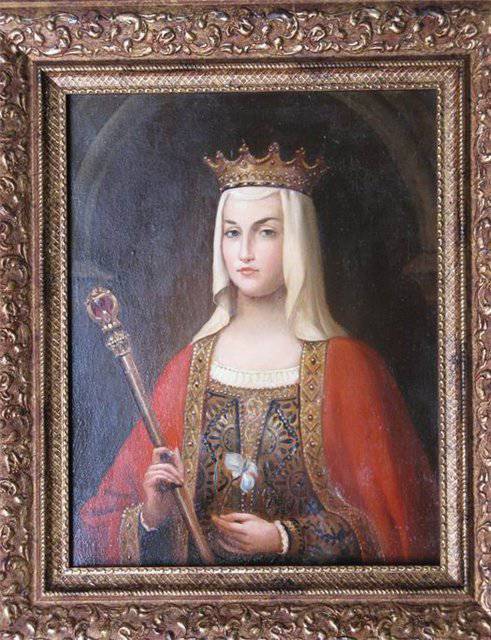
It was in Reims that the French kings crowned since ancient times. Anne was given a special honor: the ceremony of her coronation took place in the same ancient city, in the church of the Holy Cross. Already at the beginning of her royal journey, Anna Yaroslavna had accomplished a civil feat: she showed perseverance and, refusing to take the oath on the Latin Bible, took an oath on the Slavic Gospel, which she brought with her. Under the influence of circumstances, Anna will then accept Catholicism, and in this the daughter of Yaroslav will demonstrate wisdom - both as the French queen and as the mother of the future king of France, Philip First. In the meantime, a golden crown was placed on Anna’s head, and she became Queen of France.
Arriving in Paris, Anna Yaroslavna did not consider it a beautiful city. Although by that time Paris from the modest residence of the Carolingian kings turned into the main city of the country and received the status of the capital. In letters to her father, Anna Yaroslavna wrote that Paris was gloomy and ugly; she complained that she had fallen into a village where there are no palaces and cathedrals, how rich Kiev is.
THE DYNASTY OF CAPETING IS STRENGTHENED ON THE THRONE
At the beginning of the XI century in France, the Carolingian dynasty came and established the Capetian dynasty, after the first king of the dynasty, Hugo Capet. Three decades later, the future husband of Anna Yaroslavna Henry I, son of King Robert II the Pious (996-1031), became the king from this dynasty. The father-in-law of Anna Yaroslavna was a rude and sensual man, but the church forgave him everything for piety and religious zeal. He was considered a learned theologian.
The accession to the throne of Henry I was not without palace intrigue, in which the main role was played by a woman. Robert the Pious was married twice. With his first wife, Bertha (mother of Heinrich), Robert divorced at the insistence of his father. The second wife, Constanza, turned out to be a gloomy and evil woman. She demanded that her husband be crowned as co-ruler of their young son Hugo II. However, the prince fled from the house, unable to bear the despotic treatment of his mother, and became a robber on the roads. He died very young, in 18 years.
Contrary to the intrigues of the queen, the bold and energetic Henry I, crowned in Reims, became the co-ruler of the father in 1027. Constanta hated her stepson with fierce hatred, and when his father died - Robert the Pious, tried to depose the young king, but in vain. It was these events that made Henry think about the heir to make him his co-regent.
Widowed after the first marriage, Henry I decided to marry a Russian princess. The main motive of this choice is the desire to have a strong, healthy heir. And the second motive: his ancestors from the Kapets' house were in consanguinity with all the neighboring monarchs, and the church forbade marriages between relatives. So fate destined Anna Yaroslavna to continue the royal power of the Capetians.
Anna's life in France coincided with the economic growth in the country. During the reign of Henry I, the old cities are revived - Bordeaux, Toulouse, Lyon, Marseille, Rouen. The process of separating the craft from agriculture goes faster. Cities are beginning to be freed from the power of seniors, that is, from feudal dependence. This entailed the development of commodity-money relations: taxes from cities bring income to the state, which contributes to the further strengthening of statehood.
The most important concern of the husband of Anna Yaroslavna was the further reunification of the lands of the Franks. Henry I, like his father Robert, led the expansion to the east. Kapeting foreign policy was distinguished by the expansion of international relations. France exchanged embassies with many countries, including the Old Russian state, England, the Byzantine Empire.
The surest way to strengthen the power of the kings was to increase, increase the royal lands, turning the royal domain into a compact complex of the fertile lands of France. The domain of the king is the land on which the king is sovereign, here he owned the right of judgment and real power. This path was carried out with the participation of women, through the thoughtful marriage unions of members of the royal family.
To strengthen their power, the Capetians approved the principle of heredity and co-government of royal authority. For this, the heir, the son, was introduced, as already mentioned, to the government of the country and was crowned while the king was still alive. In France, for three centuries, it was precisely the co-government that retained the crown.
The role of women in maintaining the principle of inheritance was considerable. Thus, after his death and the transfer of power to his young son, the sovereign's wife became regent, mentor to the young king. True, it rarely did without a struggle between the palace groups, which sometimes led to the violent death of a woman.
The practice of co-government, established in France, was used in Russia. For example, in 969, Yaropolk, Oleg and Vladimir became co-rulers of the father, Grand Duke Svyatoslav I Igorevich. Ivan III (1440-1505) announced the eldest son Ivan of the first marriage as co-regent, but the second wife, the Byzantine princess Sophia from the Palaeologis family, was unhappy with this. After the early mysterious death of his son, Ivan Ivanovich, Ivan III appointed his grandson Dmitry Ivanovich co-ruler. But the grandson and daughter-in-law (the spouse of the deceased son) also fell into disfavor during the political struggle. Then the son born of Sophia, Vasily Ivanovich, was declared co-ruler and heir to the throne.
In the same cases, when such an order was violated and the father distributed the inheritances to his sons, after his death a fratricidal struggle began - the path to the country's feudal fragmentation.
Difficult share of queen mothers, if she is widowed
Anna Yaroslavna widowed in 28 years. Henry I died on August 4 1060 in the castle Vitry-o-los, near Orleans, in the midst of preparations for war with the English King William the Conqueror. But the coronation of the son of Anna Yaroslavna, Philip I, as co-ruler of Henry I, took place during the lifetime of his father, in 1059. Heinrich died when the young king Philip was eight years old. Philip I reigned for almost half a century, 48 years (1060-1108). He was a clever but lazy man.
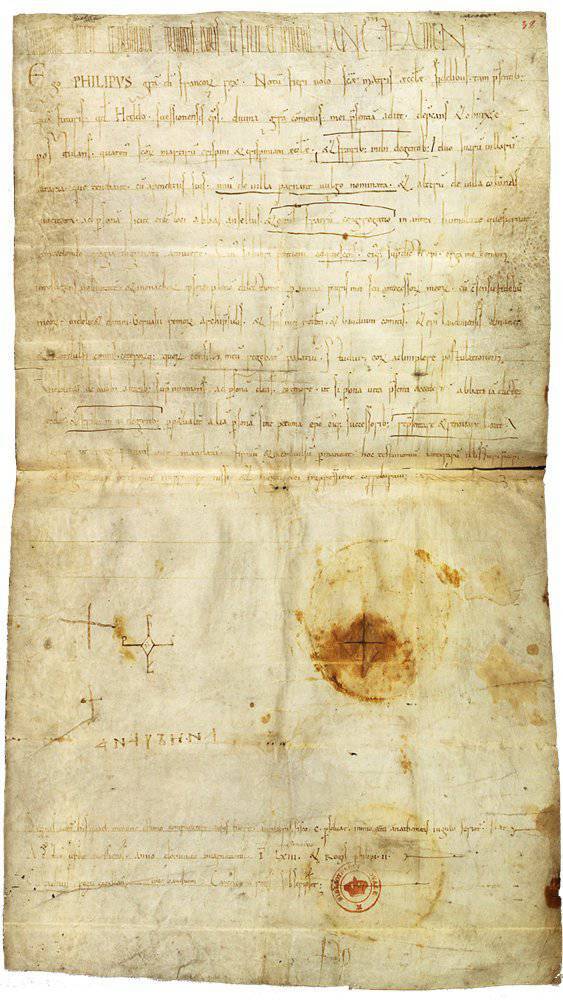
Testament, King Henry appointed Anna Yaroslavna guardian son. However, Anna - the mother of the young king - remained the queen and became regent, but she did not receive custody, as was the custom of the time: only a man could be the guardian, he became the brother-in-law of Henry I, Count of Flanders Baudouin.
According to the then existing tradition, the widowed queen Anna (she was about 30 years old) was married. The widow he married was Count Raoul de Valois. He was known as one of the most rebellious vassals (the dangerous family of Valois had tried to depose Hugh Capet before Henry I), but nevertheless he always remained close to the king. Count Raoul de Valois is the lord of many possessions, and he had no less warriors than the king. Anna Yaroslavna lived in the fortified castle of her husband Mondidier.
But there is also a romantic version of the second marriage of Anna Yaroslavna. Count Raoul fell in love with Anna from the first days of her appearance in France. And only after the death of the king dared to open their feelings. For Anna Yaroslavna, the duty of the Queen Mother was in the first place, but Raul showed perseverance and kidnapped Anna. Count Raoul broke up with his former wife, having caught her in infidelity. After the divorce, the marriage with Anna Yaroslavnaya was concluded according to the church ceremony.
The life of Anna Yaroslavna with Count Raul was almost happy, she was disturbed only by relationships with children. His beloved son, King Philip, although he treated his mother with unfailing affection, he no longer needed his advice and participation in royal affairs. And the sons of Raul from the first marriage, Simon and Gautier, did not hide their dislike for the stepmother.
Anna Yaroslavna was widowed for the second time in 1074. Not wanting to depend on the sons of Raul, she left the castle of Mondidier and returned to Paris to see the son-king. The son surrounded the aging mother with attention - Anna Yaroslavna was already more than 40 years old. Her younger son, Hugo, married a rich heiress, daughter of Count Vermandois. Marriage helped him legitimize the capture of the lands of the count.
NEWS FROM RUSSIA AND LAST YEARS
About the last years of the life of Anna Yaroslavna, little is known from historical literature, therefore all available information is interesting. Anna looked forward to hearing from home. News came different - then bad, then good. Shortly after her departure from Kiev, her mother died. Four years after the death of his wife, on the 78 year of life, Anna's father, Grand Duke Yaroslav, died.
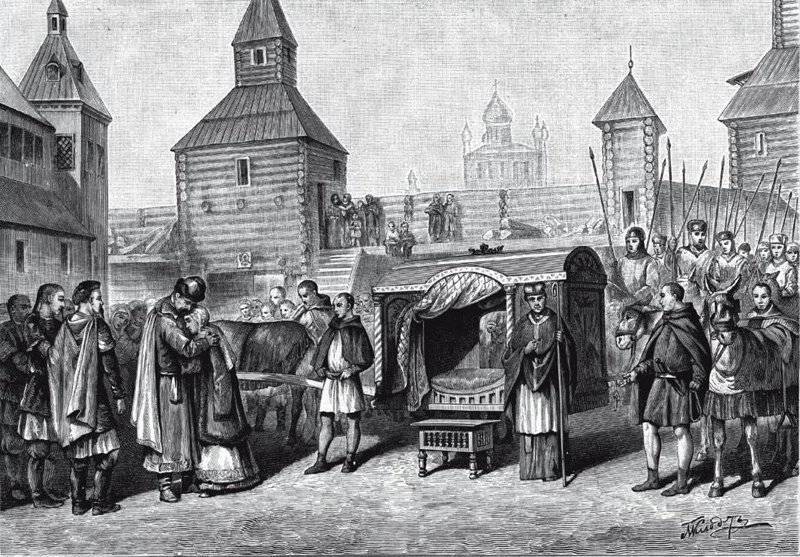
The old patient Yaroslav did not have the determination to leave the supreme power to one of his sons. The European principle of co-government was not used. He divided his lands between his sons, bequeathing them to live in harmony, honoring his older brother. Vladimir received Novgorod, Vsevolod - Pereyaslavl, Vyacheslav - Suzdal and Beloozero, Igor - Smolensk, Izyaslav - Kiev, and at first, Novgorod. With this decision, Yaroslav laid the foundation for a new struggle for the throne. Izyaslav was thrown three times, Anna’s beloved brother Vsevolod Yaroslavich returned to the throne twice.
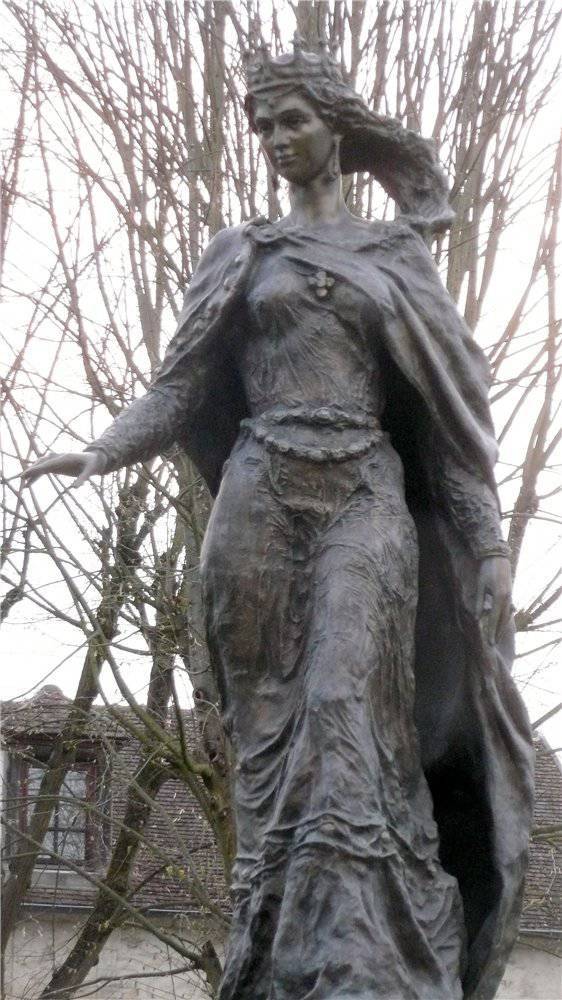
From the marriage of Vsevolod with the daughter of the Byzantine emperor Anastasia in 1053, a son was born Vladimir, nephew of Anna Yaroslavna, who will go down in history as Vladimir Monomakh (Grand Prince of Kiev in 1113-1125).
Anna Yaroslavna was living sadly now, no significant events were waiting for her anymore. Father and mother, many brothers, relatives and close people have passed away. In France, her teacher and mentor Bishop Gauthier died. Died husband of his beloved sister Elizabeth, King of Norway Harold. There was no one left who had once arrived with young Anna Yaroslavna on French soil: who died, who returned to Russia.
Anna decided to travel. She learned that the elder brother, Izyaslav Yaroslavich, was defeated in the struggle for the throne of Kiev, is in Germany, in the city of Mainz. Henry IV of Germany was a friend of Philip I (both were in conflict with the Pope), and Anna Yaroslavna set off on the road, hoping for a good welcome. It looked like an autumn leaf, detached from the branch and driven by the wind. Arriving at Mainz, I learned that Izyaslav had already moved to the city of Worms. Persistent and stubborn, Anna continued to travel, but fell ill on the road. In Worms, she was informed that Izyaslav had gone to Poland, and his son to Rome to the Pope. According to Anna Yaroslavna, not in those countries should have been looking for friends and allies for Russia. Chagrin and illness broke Anna. She died in 1082, at the age of 50.
Information